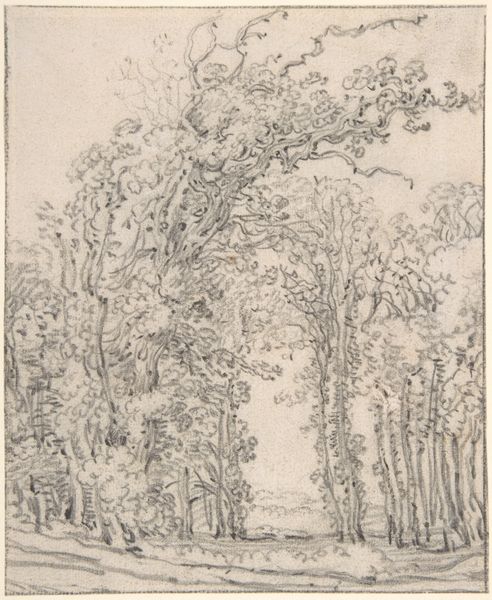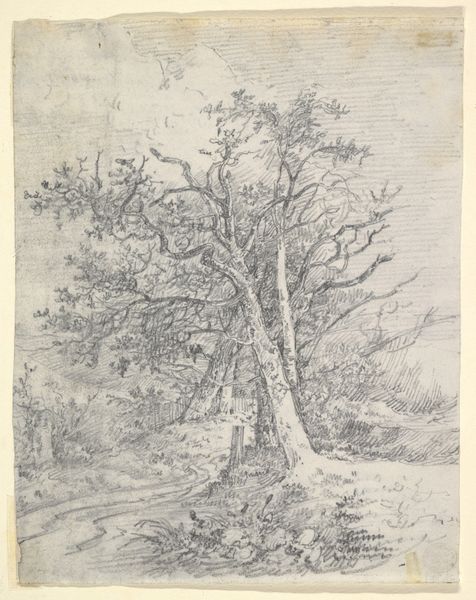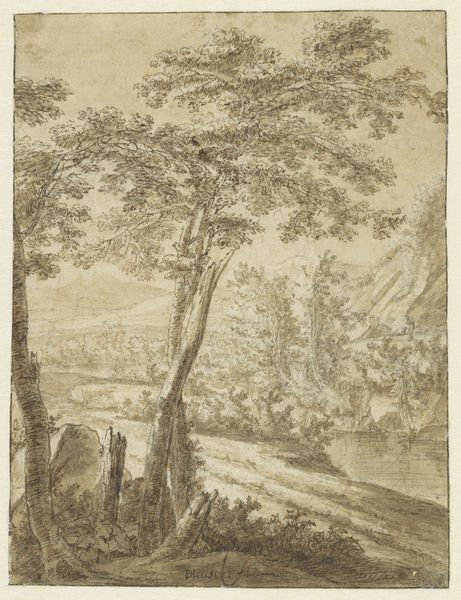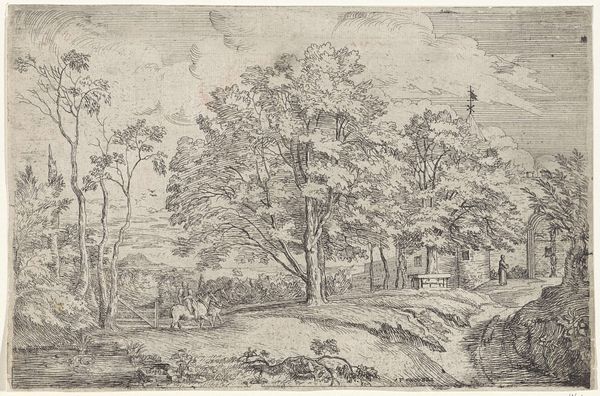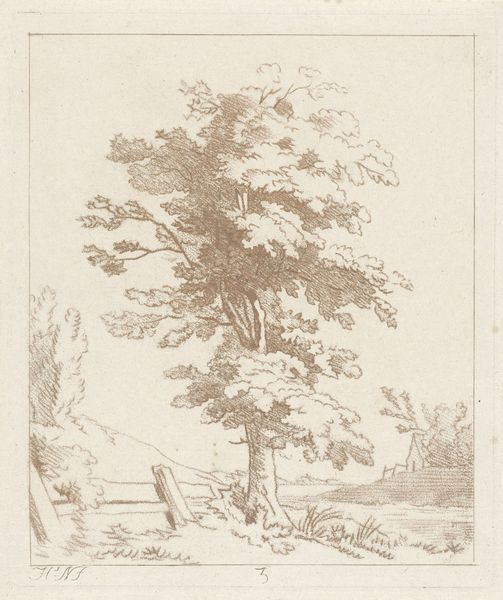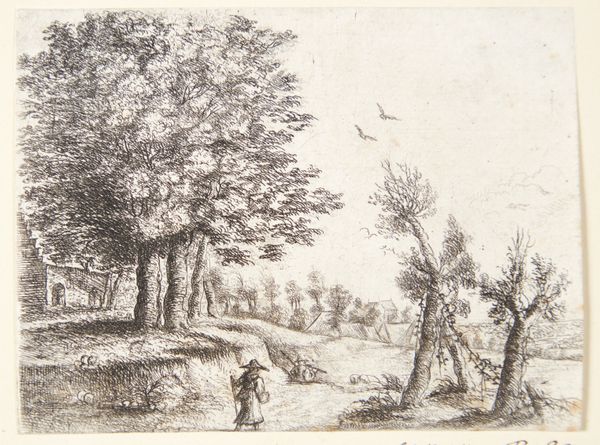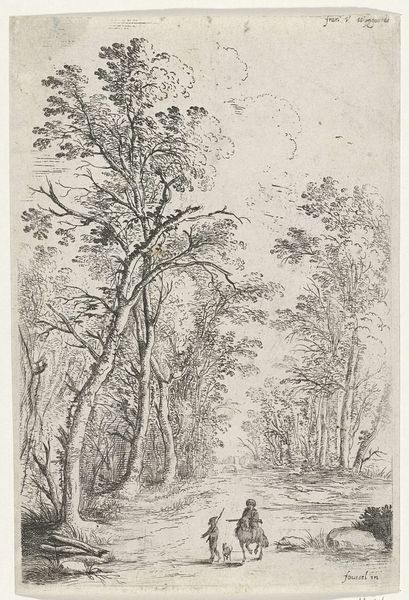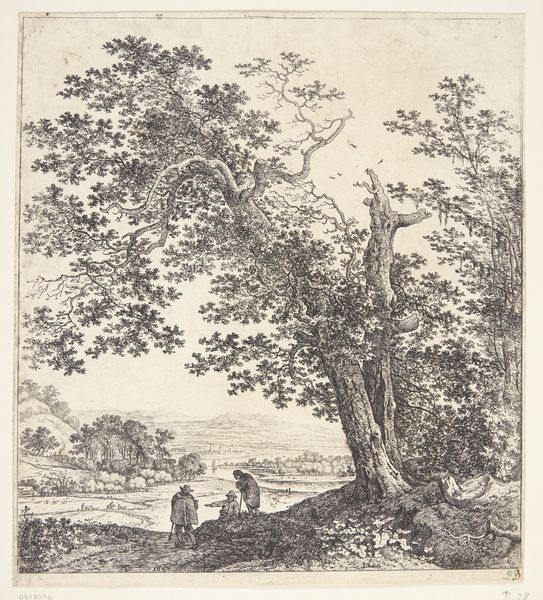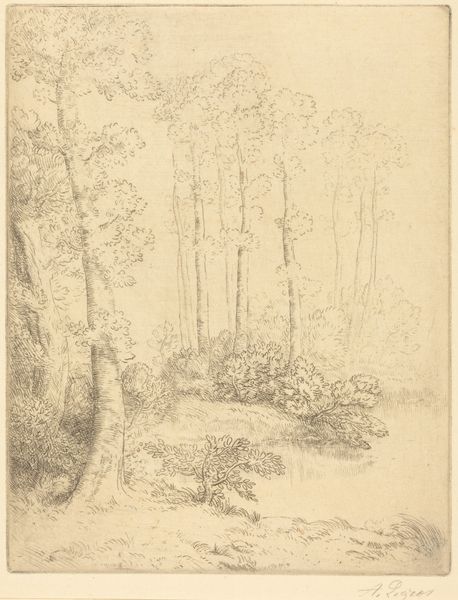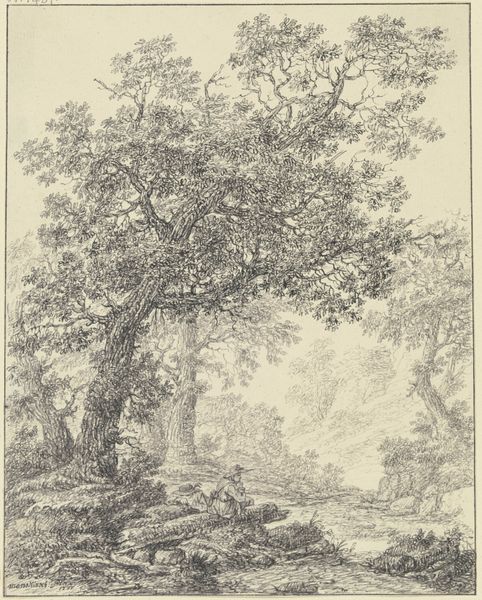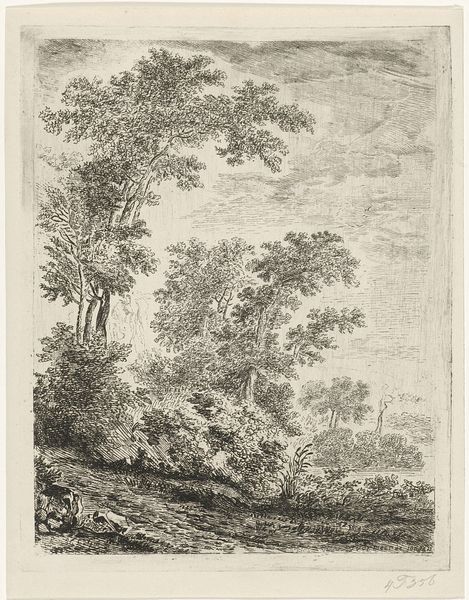
Classical Landscape with a Building and a River 1660 - 1723
0:00
0:00
drawing, print, etching, ink
#
tree
#
drawing
#
ink drawing
#
baroque
#
ink painting
#
pen drawing
# print
#
etching
#
landscape
#
etching
#
ink
#
cityscape
#
building
Dimensions: sheet: 11 1/4 x 8 3/8 in. (28.6 x 21.2 cm)
Copyright: Public Domain
Curator: This delicate etching, called "Classical Landscape with a Building and a River," is attributed to Abraham Genoels II and thought to have been created sometime between 1660 and 1723. It resides here with us at The Met. Editor: My initial reaction is one of wistful calm. It's incredibly detailed, especially for an etching. The texture of the trees and the distant buildings are compelling, but there's a melancholy stillness to the scene, wouldn't you agree? Curator: Absolutely. Genoels, working within the Baroque tradition, was deeply interested in idealised landscapes. This wasn't just about representing reality; it was about crafting a vision of harmony, order, and a perhaps a romanticized view of the past. Editor: I see that, especially in how he positions the building, seemingly a fortress or castle, nestled into nature. There’s definitely an implied power structure at play. These classical landscapes, beautiful as they are, often functioned to naturalize existing social hierarchies. Land ownership and control are subtly, yet firmly, communicated here. Curator: Precisely. Etchings like this one were readily reproducible. Prints helped to circulate certain ideologies. Think about who had access to these images. Landed gentry could reaffirm their status through possessing, collecting and displaying images that confirmed their vision of a well-ordered society. Editor: So the image, with its rivers and carefully placed structures, isn't just decorative. It's an active participant in reinforcing a specific cultural and political framework. Even the picturesque qualities contribute – a cultivated nature mirroring a cultivated society, reinforcing particular perspectives on aesthetics, status, and belonging. Curator: Yes. And by controlling the narrative – presenting this cultivated landscape as the ideal – the elite of the time reinforced their position and their values. It speaks volumes about who gets to define beauty, and whose interests that definition serves. Editor: Makes you wonder what stories are left untold in these idealized scenes, doesn't it? Curator: Always. This image encourages us to look at what is represented, but also to consider whose perspectives are missing from the picture. Editor: A valuable perspective, indeed, and vital for interpreting imagery from the past.
Comments
No comments
Be the first to comment and join the conversation on the ultimate creative platform.
